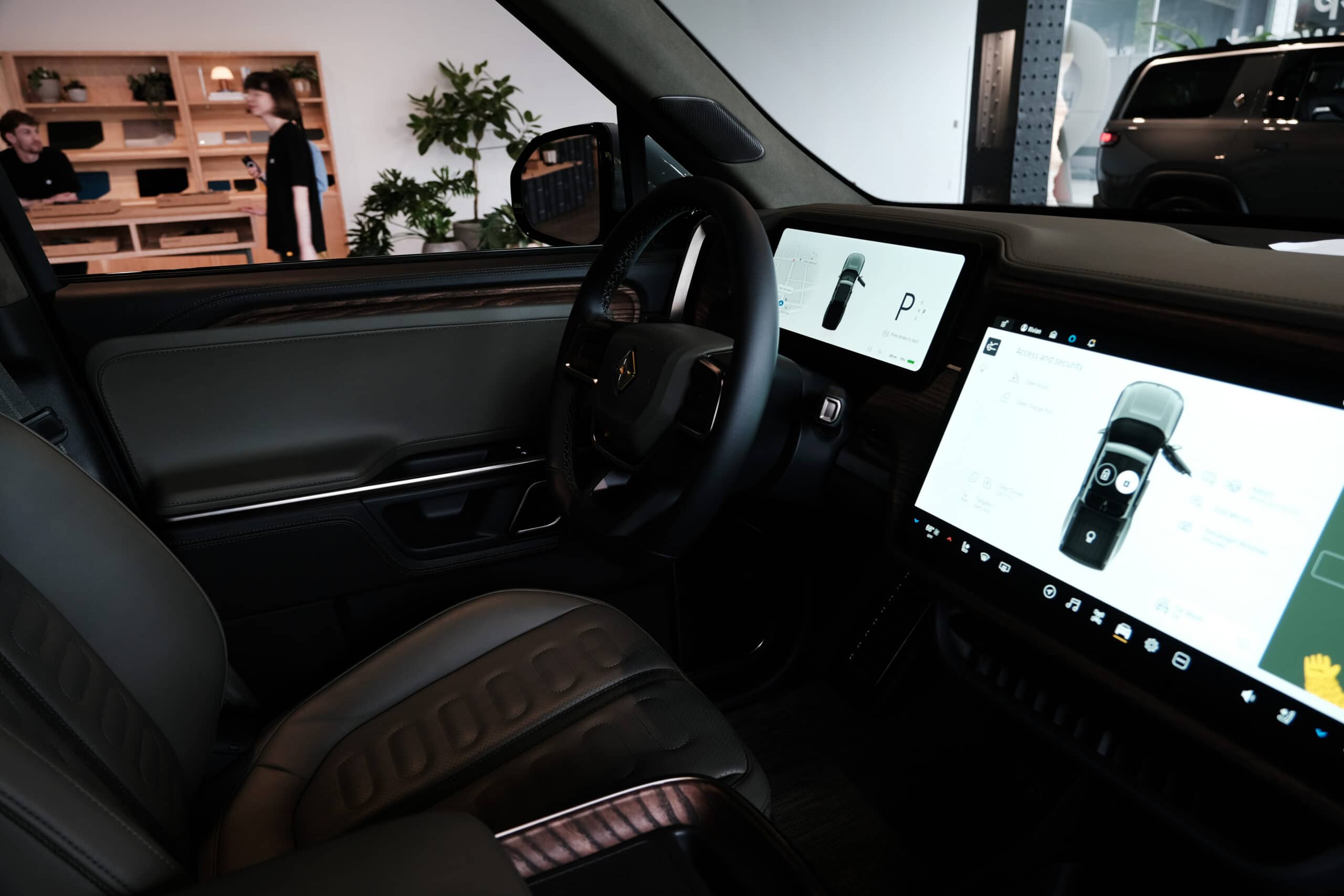Technology
Rivian Bankrupt in the Next 5 Years? Here Are the Odds it Happens

Published:
Last Updated:

Being stuck in the position of playing second fiddle is never fun, but on Wall Street, it can be downright damning. When it comes to the transition to a greener future, that is the precise case for Rivian Automotive Inc. (NASDAQ: RIVN), the Irvine, Calf.-based high-end manufacturer of electric vehicles (EVs).
The $14.06-billion company, which markets its EVs from around $70,000 to over $100,000, has found itself clinging to the major competitor in the space, Tesla Inc. (NASDAQ: TSLA). And while Tesla’s recent sales struggles have been well documented, the $670.91-billion market cap company and mainstay in the Magnificent Seven is at least the face of the EV revolution both in the U.S. and around the globe.
But for Rivian, the risk isn’t just about maintaining a competitive market share in the EV space — it is about survival as the company has struggled with solvency, not once having posted a profit since its founding in 2009.

Before diving into the company’s financial challenges, it is useful to look at the broad EV market — specifically in the U.S. — and its struggles to gain market share from legacy automakers who are still reliant upon internal combustion engine (ICE) vehicles.
Despite being project to hit revenue of $94.9 billion in 2024, the EV market is facing some of the inflationary challenges as ICE vehicle manufacturers. The volume weighted average price for an EV in the U.S. is $67,300, according to Statista, and plug-in hybrid electric vehicles continue erode the gains of strictly battery-operated EVs, the former of which are more attractive to convince-minded American drivers as they can operate on both electric and gasoline.
Worse yet, the market is dominated by Tesla, and not by thin margins, either. In 2023, 82.5% of the U.S. EV market’s revenue came from Tesla. The second-best performance of any automobile manufacturer was Ford Motor Company (NYSE: F), which only contributed 3% of total U.S. EV market revenue last year. In fact, Rivian failed to even crack the top 10.
And while significant investment in EV infrastructure has occurred — the results of which include charging stations growing from 56,590 in 2023 to 111,000 in 2024, there is a deficit of actual EVs on the road to put them to good use. The result: The compound annual growth rate (CAGR) for EV revenue from 2023 to 2024 is merely 2.92%. And while its CAGR from 2024 to 2025 is projected to grow to 10.32%, it might be too late for a company like Rivian that has been operating in the red for 15 years.

Aside from the broad industry’s headwinds, Rivian faces challenges of its own. Shares are down -33% so far in 2024, but beyond the medium term, it gets even uglier. The stock has fallen by -89.13% since going public on Nov. 9, 2021.
The company’s price-to-earnings (P/E) ratio currently stands at -2.15%. As a recap, company’s that post negative P/E ratios are not currently profitable. That we already know, but looking into Rivian’s income statement, balance sheet and cash flow statement paints an even dire picture.
On a quarterly basis, the EV company has seen its total revenue fall for four consecutive quarters:
That track record has been coupled with three consecutive earnings misses, with Rivian most recently posting an earnings per share (EPS) of -$1.25 in the second quarter versus analysts’ expectations of -$1.24. And while the consensus EPS forecast for the third quarter is a slight improvement at -93 cents, it proves the expectation is that Rivian will continue operating in the red for the foreseeable future.
Meanwhile, the company’s total liabilities have ballooned year over year since since 2023, growing from $3.02 billion in the second quarter of last year to $5.88 billion in the second quarter of this year. That is good for a 94.70% increase in liabilities. Simultaneously, total assets have fallen, which is never a good indication of future growth. When companies take on more debt, it is often due to capital expenditures that result in increased assets. That is not the case for Rivian, whose assets shrunk year over year from $17.23 billion in the second quarter of 2023 to $15.35 billion in the second quarter of this year, which equates to a 10.91% contraction.
Worse yet, the company has been operating on bloated negative free cash flow, which most recently registered -$2.56 billion on a trailing 12 month (TTM) basis for 2024. Despite that being an improvement over 2023’s year-end figure of -$5.89 billion and 2022’s -$6.42 billion, it proves the company remains nowhere near profitability in the near or medium term.

While the outlook for the EV market in the U.S. is tepid but promising in the long term, that does not inspire analysts when it comes to Rivian’s one-year price targets. The Wall Street Journal’s analysts give shares of RIVN a consensus median target of $17.00. At a current share price of $17.91, that is good for a 5.08% decrease in the stock’s price.
Adding to the pain, 17.33% of the company’s public float is currently being shorted, according to Nasdaq.com. Specifically, 124.922 million shares of the 721.140 million float are being targeted by shorts.
While the company’s long-term prospects remain cloudy, the broad EV market and Rivian’s earnings and financials should be enough to repel shareholders for the next year if not longer.
Thank you for reading! Have some feedback for us?
Contact the 24/7 Wall St. editorial team.